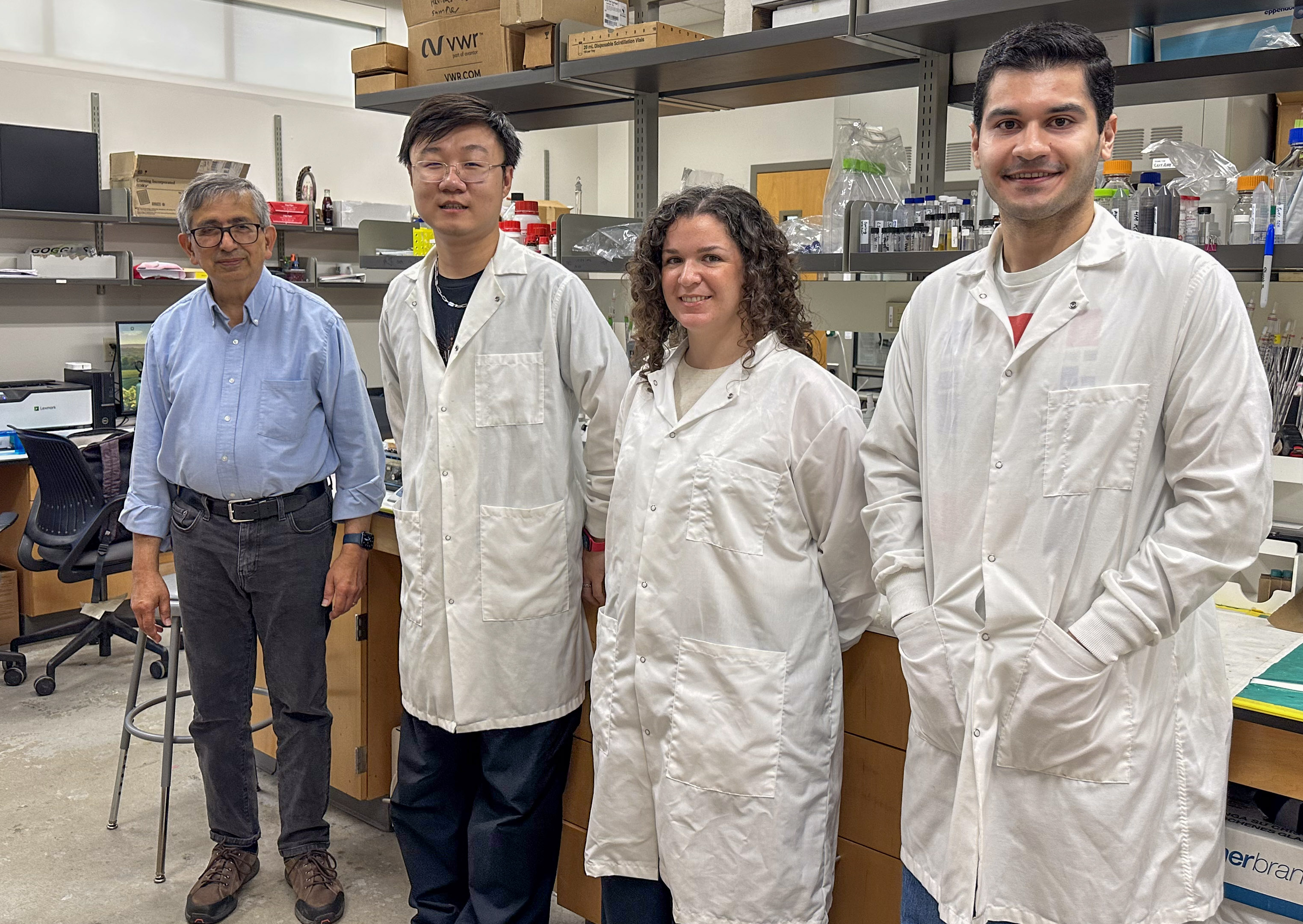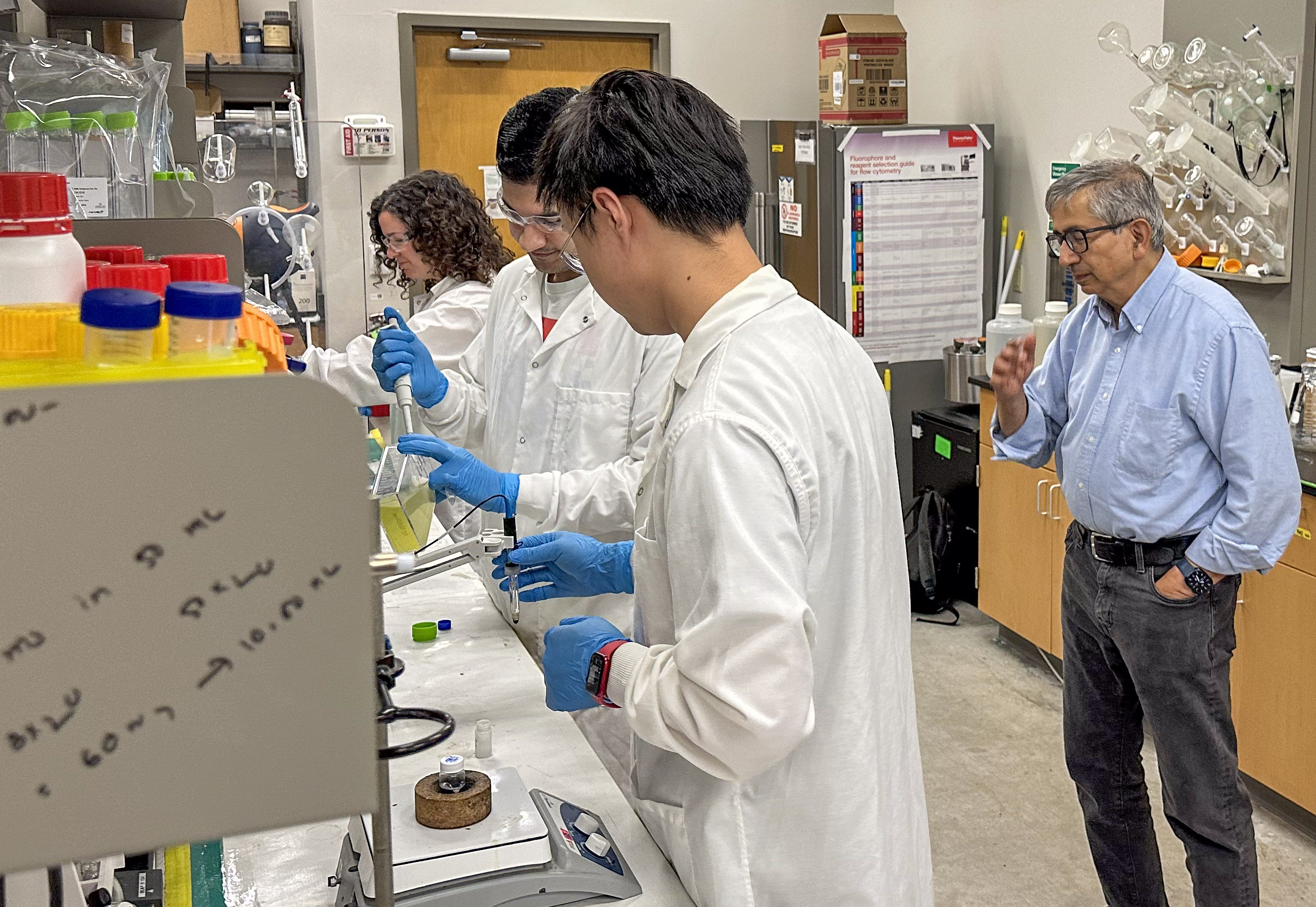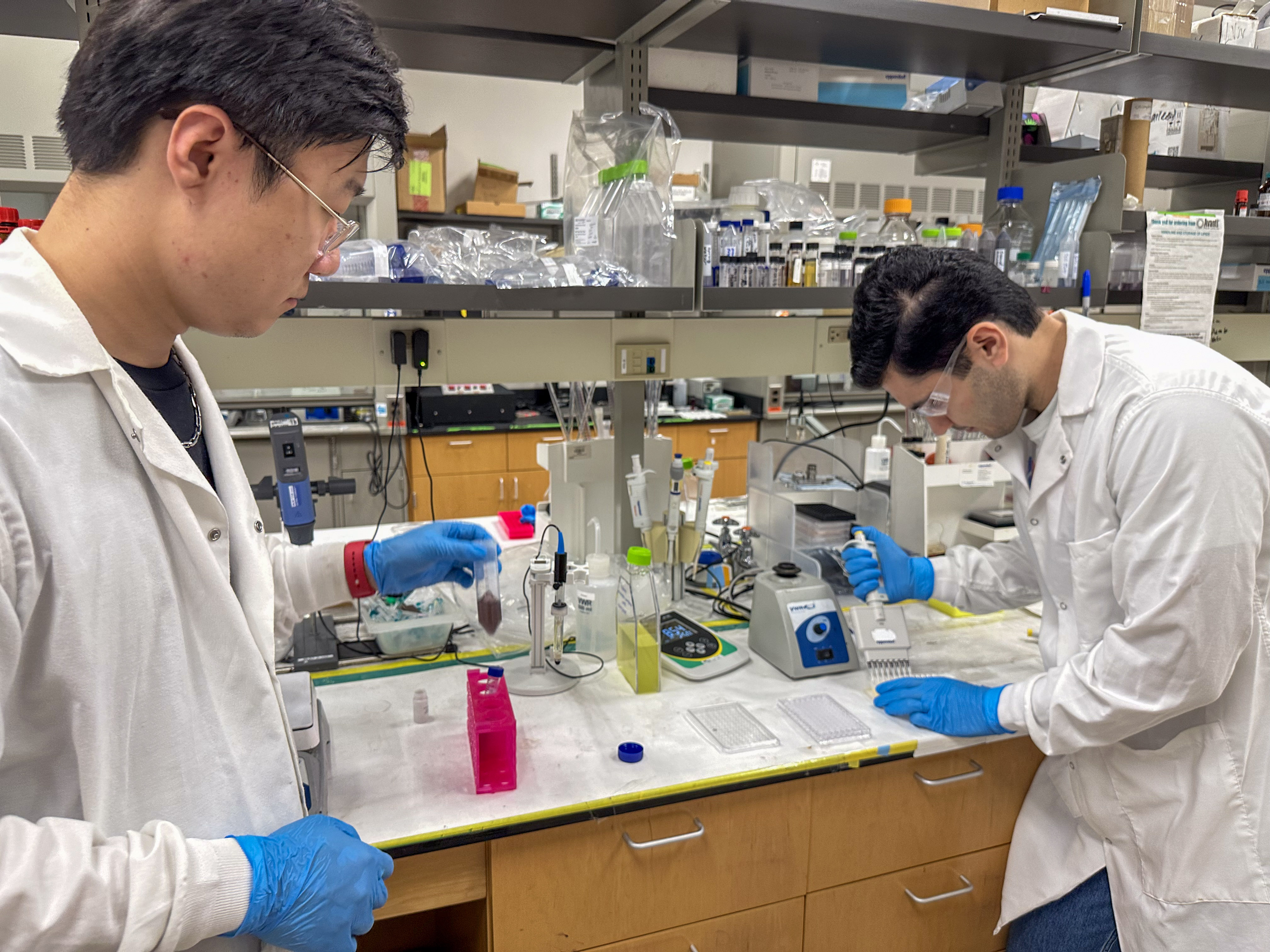Researcher Vijay John creates scalable, cost-effective treatment for algae blooms in municipal water systems

Pictured: Vijay John, D.Eng.Sc. with his lab members, Borui Wang, Monica Brady, PhD and Pedram AziziHariri.
Harmful algal blooms (HABs), caused by toxin-producing cyanobacteria, are an increasing threat to public health, natural resources, and the economy. In Louisiana, fishing warnings are issued following the opening of the Bonnet Carré Spillway, when nutrient-laden Mississippi River water triggers blue-green algae blooms in Lake Pontchartrain. In Florida, the “Red Tide” algal blooms lead to large fish kills devastating the fishing industry along the Gulf Coast and causing respiratory illnesses from toxins in the marine aerosol droplets. HABs have significant economic and societal impacts worldwide.
These outbreaks can close beaches, sicken people, kill marine life, and disrupt the seafood industry. As the problem becomes more widespread, so does the need for innovative, cost-effective, and scalable solutions to detect, prevent, and manage HABs. At Tulane University, scientist Vijay John, D.Eng.Sc, the Leo S. Weil Professor in Engineering at the Tulane School of Science & Engineering, is examining the complex interplay of warming waters, stormwater runoff, and nutrient pollution that contribute to these blooms — and is developing a solution for municipalities to address the problem.
John has built a career defined by curiosity, interdisciplinary innovation, and a commitment to solving real-world problems. Inspired by a novel technique in biomedical research involving metal-phenolic networks, John envisioned a way to repurpose this technology to cluster algal cells, drawing a surprising yet powerful connection between biomedical engineering and environmental science. This leap of imagination laid the foundation for a new approach to combating HABs, a growing ecological and public health concern.
Through collaborations with institutions like Mote Marine Laboratory in Sarasota, Florida, and the University of Maryland, John has advanced a unique foam-based treatment for HABs, integrating flocculation techniques, a process by which cells are clumped together, along with environmentally safe surfactants. Supported by a contract with the U.S. Army, which has a vested interest in maintaining navigable and clean waterways, his team is currently preparing for large-scale field demonstrations in Lake Okeechobee, Florida. The project not only exemplifies translational research but also reflects John's vision of commercializing academic innovations to serve local communities while protecting vital water resources.

Traditional mitigation strategies often involve chemical treatments or physical removal; however, John saw an opportunity to adapt his prior research to address this ecological challenge. By clustering algal cells using flocculation with a sprayed algicidal foam, he could potentially sink the algae out of sunlight-rich surface waters, disrupting their growth.
“Foams are easily produced,” John said. “The technology to scale already exists and can be seen in examples from firefighting and even in backyard party foam machines.” By infusing these foams with environmentally safe surfactants and algicides, his team is creating a delivery system that could coat and neutralize harmful algae on a large scale.
What makes this research especially compelling is its potential for global impact. HABs are not just a nuisance; they can devastate ecosystems, threaten public health, and disrupt local economies. Effective mitigation strategies are urgently needed in regions where water is at risk.
John is currently collaborating with the Tulane Innovation Institute to strategize the commercialization of this technology and identify industry partners who may be interested in it. He also recently received a Provost’s Proof of Concept grant in Fall 2024 to expand his team’s work on this project. Notably, the National Academy of Inventors (NAI) recently named John a Senior Member. This designation recognizes scientists who foster innovation within their communities and institutions while educating and mentoring the next generation of inventors. John’s work exemplifies how academic innovation and curiosity-driven research, when connected with strategic collaborators like Mote Marine and others, can evolve into practical solutions that address real-world problems.
To learn more about the research, innovation, and licensing opportunities at Tulane University, visit innovation.tulane.edu/industry.

